
Alberto Fujimori is the son of Japanese immigrants, and was president of Peru from 1990 to 2000. His election was unexpected – he was the dean of an agricultural university and no one had any idea he had political ambitions. But desperate times called for desperate measures: Peru was bankrupt and had been shunned by the international community as it was unable to repay its debts. Also, ten years on from their first attack, the Shining Path rebel movement was stronger than ever. This unknown ‘Chinese’ (as the Peruvians called him), unaffiliated to any political party and untainted by history, seemed like a breath of fresh air.
His first term in office was successful – the currency was stabilised, the national debt shrunk, foreign investment flooded in and Abimael Guzmán, leader of the Shining Path, was arrested. Then came Fujimori’s ‘auto-coup’ – he set aside the constitution and dismissed Congress, effectively setting up a dictatorship. Fujimori’s paramilitary death squad Grupo Colina was unleashed and became infamous for kidnappings and extrajudicial executions.
In 2009, Fujimori was sentenced to 25 years in jail for human rights abuses and corruption. The regime was characterised by Transparency International as one of the most corrupt of the 20th century.
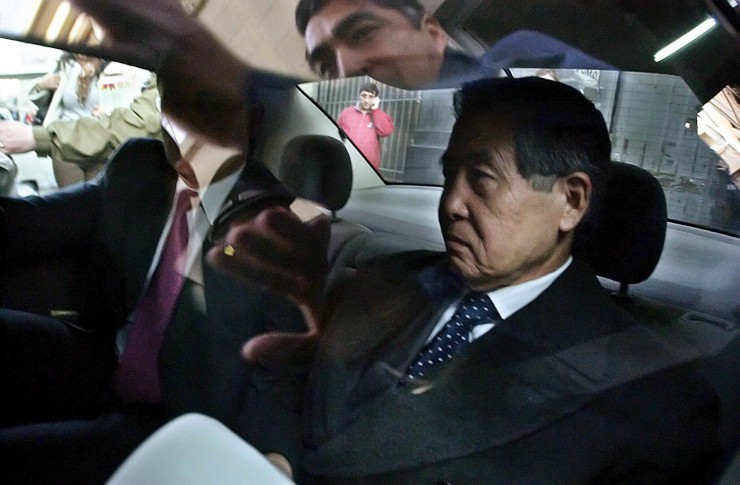
Former Peruvian president Alberto Fujimori fighting extradition to his homeland on corruption and human rights charges, is pictured behind the window of a car outside the court on Wednesday 14 June, 2006 in Santiago, Chile (photo: EPA/Ian Salas).
Many Peruvians see his punishment as a conspiracy. For them, Fujimori was the president who reached parts other governments never had. He built countless roads, schools and clinics. This is one of the reasons why his daughter, Keiko Fujimori, is a popular candidate in the 2016 presidential elections.
Shining Path (Sendero Luminoso) is a revolutionary organisation organised according to Maoist principles. The movement was founded in 1970 by former university philosophy lecturer Abimael Guzmán, alias Comrade Gonzalo. The original aim of the movement was to overthrow the government and replace it with a Communist farmers’ state. Paradoxically enough, ordinary farmers became the biggest victims of Sendero, which believed the farmers had no opinions and could show no initiative of their own, and so had to be led to the Promised Land by others. They introduced severe punishments, publically executing those who refused to follow. Large numbers of the Asháninka Indians were massacred, forced into slavery or recruited under duress.
In 2003, Peru’s Truth and Reconciliation Commission stated that some 70 thousand people disappeared or died during the civil war between 1980 and 2000. The Shining Path also carried out attacks on the government and the army.
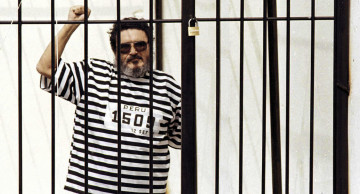
Abimael Guzman(L), founder and leader of the maoist guerrilla Sendero Luminoso (Shining Path) greets with a clenched fist salute at the beginning of his trial on September 24, 1992 (AFP PHOTO/Hector MATA).
After Guzmán was captured in 1992, the organisation continued to be sporadically active. It was also linked to cocaine smuggling, which regularly led to clashes with government troops.
The year 2000 marks a turning point in the history of Peru. The resignation of president Fujimori – who was facing charges of corruption and violation of human rights – brought an end to a series of incompetent, corrupt presidents. His successors, President Alejandro Toledo and in particular Alan Garcia, transformed Peru in just six years into a democratic nation and a top target for investors.
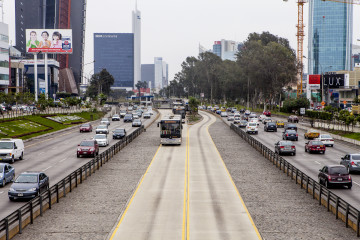
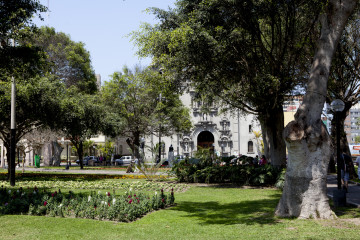
Between 2002 and 2012, the economy doubled and thousands of Peruvians worked their way out of poverty into the middle class. Chef Gastón Acurio couldn’t have chosen a better moment to relaunch the local cuisine. Gastronomy – there is no more popular subject of conversation for Peruvians – proved to be exactly the right vehicle to carry the growing national confidence forwards. Gastronomy brings people of different backgrounds together and is changing the face of Lima. In 2001, the basis for the city’s revival was laid by Mayor Alberto Andrade. He laid out parks, had a highway built and restored the city centre. Thanks to the gastro boom, the number of restaurants doubled and the tourists came, bringing work and investment in their wake.
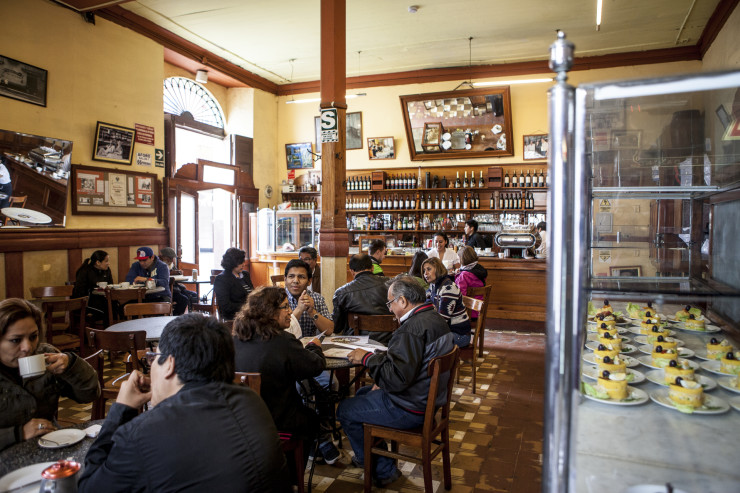
Peru’s rapidly growing middle class likes nothing better than to eat out.
Peru is one of the fastest-growing and most stable economies in Latin America. During the past ten years, the Peruvian economy has doubled in size, with average annual growth of 6.5 percent.
The basis of this economic development lies in the market-oriented reforms and privatisations of the 1990s. In addition, several successful measures have been introduced to promote international trade (free trade agreements) and to attract investors. Peru is a major producer of zinc, copper and gold (as well as coca, but this is not reflected on the national balance sheet – in 2013, Peru passed Colombia as the biggest producer of coca in the world); the high global prices for minerals (until 2008) also contributed to Peru’s economic growth. Peru also profited from the growth of China – the biggest importer of Peruvian copper.
Tourism is also a growing source of revenue: in 2015, Peru welcomed 3.5 million tourists – 10 percent more than the previous year and three times the number for ten years ago. 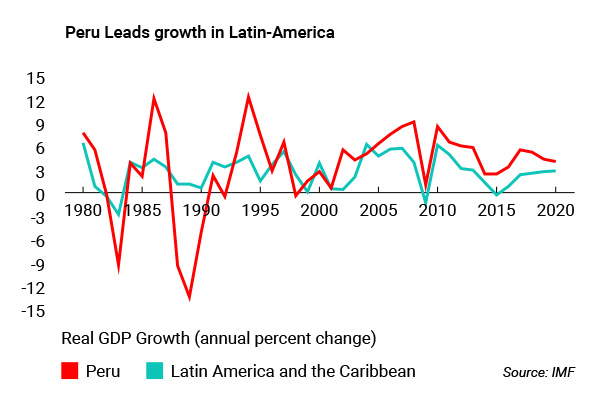
Peru passed the developing country stage a long time ago. The Human Development Index – a ranking of countries on the basis of economic growth, equality, education and life expectancy – puts Peru in 84th place (out of 187). A lot has changed during the past 15 years in particular. Whereas in 2006 almost half of Peruvians were living below the poverty line, by 2014 it was less than a quarter (source: World Bank).
Peru is the country in Latin America where during the past ten years the most people have escaped poverty and worked their way up into the middle class. In 2014, one in three Peruvians earned a middle-class income of between 10 and 50 dollars a day (UNDP 2014). There is still a great discrepancy between the cities and the countryside, however. Half of the nation’s income is earned in Lima. 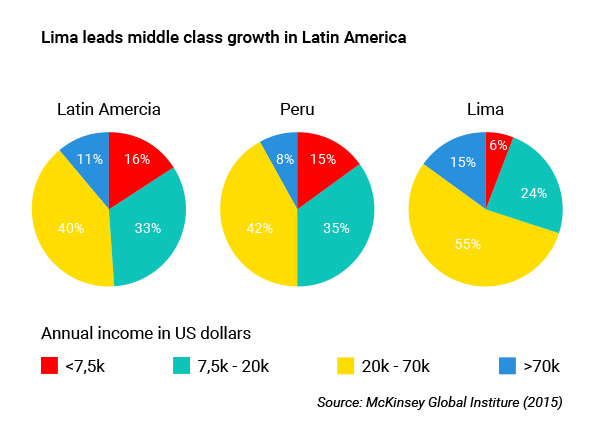
Pretty bad really – at least until recently. It started with the Spanish colonists who introduced a system of landowners in the 16th century – entire villages were forced to work for a landowner. General Velasco, who seized power in a military coup in 1968, put an end to these semi-feudal conditions by taking the land from the landowners. More and more small farmers began working for themselves again, but their lack of experience meant production levels fell dramatically. Farmers had just got used to the new situation when the next calamity arrived: the Shining Path. This movement fought to set up a Communist farmers’ society, but in the process subjected the farmers in the Andes region to a brutal regime. 70 thousand people died in the struggle, most of them poor farmers from the Andes.
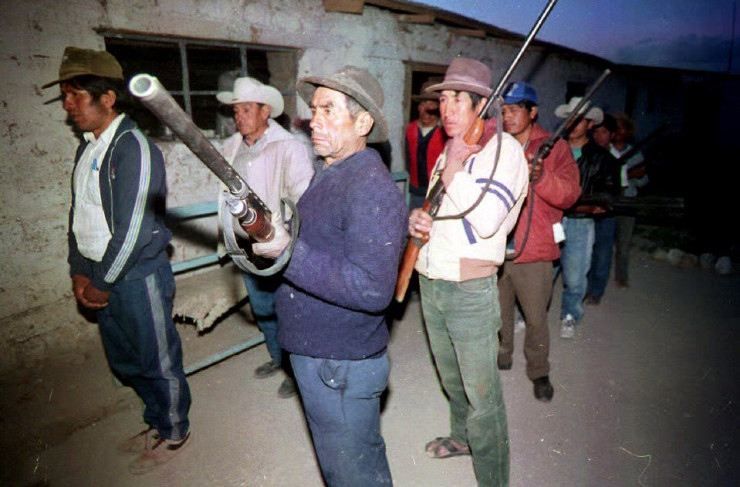
Farmers belonging to an auto-defense group gather arms at a local army post 15 September 1992 in Andamarca, Peru (Photo: Hector Mata/AFP).
Is the gastro boom leading to a revival of the farmers’ fortunes? Not entirely – farmers are still struggling to compete against cheap imported produce. But there are certainly opportunities. Peru is the world’s 8th biggest supplier of mangos and avocados. Demand for high-quality products in particular is increasing: exotic fruit, superfoods, cocoa, coffee and quinoa – in fact, the level of demand from the West means there is hardly any quinoa to be had in Peru. Farmers dare to hope again – something they have not done in the past 400 years, according to chef Gaston Acurio. ‘Peru has always been a country of inequality, with the rich in the city and the poor farmers in the countryside. Through the rejuvenation of the local cuisine and biodiversity, the city now respects the farmers; and this is the most important thing for a country in peace.’
In Moby Dick, Herman Melville calls Lima ‘The saddest city on earth’ – he was talking mainly about the weather. Lima’s climate is uninspiring; it hardly ever rains and the sun only shines for about two months a year. The rest of the time, the city is shrouded in a white cloud blanket caused by the thick sea fog created by the collision of cold and warm air flows.
These exceptional climatic conditions are due to Lima’s location between the jungle and the sea. The cold Humboldt Current running along the coast tempers the tropical sun, while the Andes mountains act as a barrier against the rains from the Amazon. Lima is the second biggest desert city in the world (after Cairo), with a climate much cooler than its southern latitude might suggest.
About an hour’s drive from Lima, towards the Andes, the sky becomes clear and the sun and the stars become visible again.
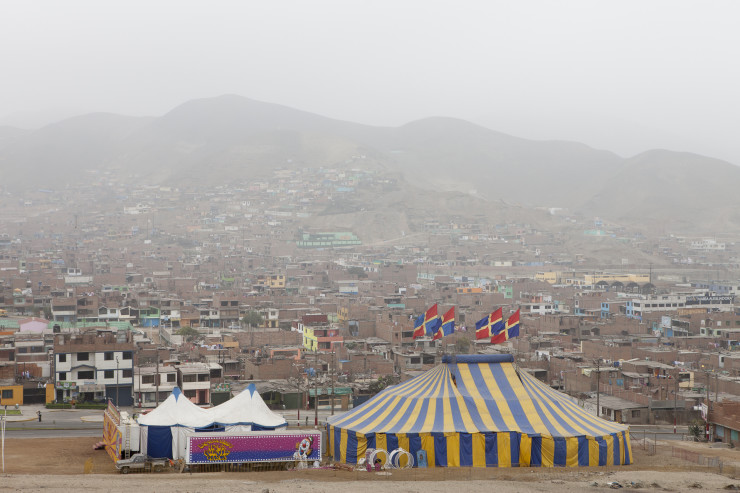
From May till October Lima’s inhabitants won’t see sun or stars.
Perhaps the Spanish were deceived by the weather – they arrived in January, one of the few months in the year when the sun shines in Lima. But the main reason they chose Lima in 1535, rather than Cusco – the Inca capital – was that they didn’t want another mountain capital like Quito and Bogota. Its location on the coast connected Lima, the new colony, to Spain.
Thanks to its harbour, during Spanish rule Lima was one of the most important cities in Latin America, even though it is far from a good location for a capital city. The climate means there is too little water in the winter, and there is always a danger of flooding in the summer. Also, exhaust fumes, smog and pollution are ‘trapped’ below the fog blanket.